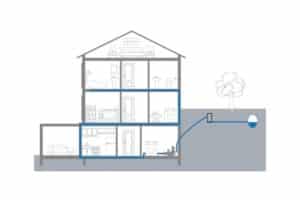Este ano vimos as condições climáticas extremas causarem estragos em todo o mundo, desde temperaturas recordes a fortes chuvas causando grandes inundações.
A Organização Internacional para as Migrações diz que a mudança climática forçará um grande número de pessoas se deslocarem à medida que os eventos climáticos se tornarem mais intensos, o nível do mar continuar a aumentar e a degradação ambiental piorar.
Adaptar-se às mudanças climáticas é um enorme desafio para as grandes cidades, especialmente aquelas nas áreas costeiras. Uma localização baixa, urbanização e eventos climáticos ligados à mudança climática tornam Bangkok particularmente vulnerável a inundações. E para piorar a situação, a cidade está afundando de um a dois centímetros por ano.
Para ajudar a cidade a combater os efeitos das mudanças climáticas, a arquiteta de paisagens tailandesa Kotchakorn Voraakhom criou um parque público em Bangkok projetado para resistir às frequentes inundações.
A park that acts like a sponge
Bangkok used to be known as the “Venice of the East” because of its waterways. Today though, many of the city’s canals have been paved over to make way for urban sprawl.
The problem is that those waterways acted as conduits for rainwater, which now has nowhere to go. As a result, Bangkok experiences frequent flooding.
“When I was young, there were rice fields and canals in the city,” says Voraakhom. “I could hear boats from my house in central Bangkok. Now, all those fields and canals have been stopped with concrete and covered by highrises. All of the buildings and concrete become obstacles for water to drain, so the city floods.”
Chulalongkorn University Centenary Park, or CU Centenary Park, is part of a new wave of design that aims to increase urban resilience and to protect vulnerable communities from the devastating effects of climate change.
During rainy season the park collects and stores water that is then used for irrigation in the dry season.
Capturing rainwater
The park takes up 11 acres at the centre of Chulalongkorn University and includes space for outdoor meetings, an amphitheatre, a lawn for recreation, playgrounds, and a small museum. Crucially, though, it has been built to flood.
The park can hold up to one million gallons of water. That’s the equivalent of an American football field being completely filled with water at a depth of 1.13 metres, or 3.71 feet.
It does this by using various floodwater-management systems: a green roof, wetlands, a lawn with a detention basin and a retention pond.
The museum features Thailand’s largest green roof with 5,220 square metres of native grasses and weeds. The grasses absorb large amounts of water during the July-to-October wet season and are hardy enough to weather the March-to-June hot season.
Three large tanks below the roof and museum can hold up to 250,000 gallons of runoff from the green roof. During the dry season, these tanks will provide enough water to keep the park irrigated for up to 20 days.
The park sits at a very slight angle, so that gravity pulls the water from the highest point – the roof – to the lowest point, the retention pond. “No drop of water that falls into the park is wasted,” says Voraakhom.
This design method is called “urban porosity”, and Voraakhom is the founder and CEO of Porous City Network, a landscape architecture social enterprise working to increase urban resilience in Southeast Asian cities.
“We want to re-introduce permeable surface back into the city, through a network of public green spaces projects, like small parks, urban farms, and canals. Urban porosity is critical to managing water stress in Bangkok,” states the Porous City Network on its website.
Bangkok suffered devastating floods in 2011, which affected 13 million peopleand left many areas underwater for months, as well as wiping 9% off Thailand’s fourth-quarter GDP that year.
Vulnerable cities such as Bangkok need to prepare for a future of more extreme floods, and projects such as CU Centenary Park could help to mitigate some of the impact of climate change.



































